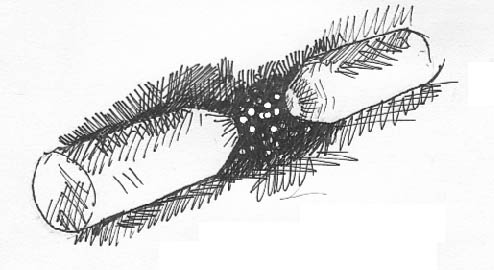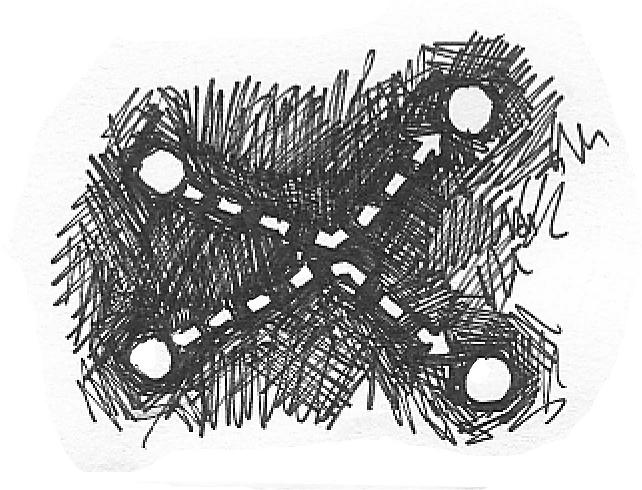Research
- E3: cQED, Optomechanics
- E4: Collective modes
of spinor gases - E5: Optical Kagome Lattice
- E6: cQED, Optical lattice Retired Experiments
- E1: Spinor Rubidium BEC
- E2: Cavity QED
Group Information
- People
- Publications
- Theses
- Presentations
- Research Highlights
- Popular Coverage
- Lab news
- Undergraduate research
Links
- January 2016 MURI Review Meeting
- Useful Links
- Review Papers
- Ultracold Coffee Hour
- Bitbucket: AMO@Berkeley
- Our Old Website
- AMO Seminar (PHYS 290F)
Many-Atom Cavity QEDRecent work with single atoms in high finesse optical cavities has provided a wealth of interesting physics. Placing many atoms in an optical cavity leads to enhanced many body effects, the generation of novel light states, and possibly much more. Atom Number Counting and Fock State GenerationThe ability to reliably confine cold atoms within an optical cavity opens the door to reliable generation of single and multi-photon states (pdf). With our apparatus, we would be able to deliver a large ensemble of ultracold atoms inside the resonant mode of a strongly-coupled optical cavity. A few atoms can then be excited from the ensemble to the resonant state by a weak two photon transition.  Figure 1: A few atoms can be excited from a background of cold atoms to a state resonant with the optical cavity. Since the atom cavity coupling is so high, the presence of a few atoms dramatically affects the transmission spectrum of the cavity, using this it is possible to accurately count the number of “active” atoms in the cavity. This would be atom counting via transmission measurements. The active atoms could then be mapped onto single photons via a Raman transition. These photons would leave the cavity and could be detected with standard quantum optical techniques (e.g. heterodyne detection). Details relevant to our experimental setup can be found here. Cavity Cooling with Many AtomsRecently, the cooling of atoms in an optical cavity has been the subject of much theoretical and experimental work. Since the presence of an atom at the node of a high-finesse cavity dramatically affects the resonance of the cavity, as an atom moves through the cavity field, the intra-cavity intensity changes respectively. This effect can be harnessed to produce a Sisyphus type cooling. Since the cooling relies on changes in intra-cavity intensity, and not spontaneous emission, cavity cooling could be used to cool molecules which generally have no closed transition. Since the motion of one atom can dramatically affect the cavity field, it also affects the motion of other atoms in the cavity. This leads to self organization and cooling of the atoms in the cavity. [1] Squeezed States of Light Figure 2. Two mF = 0 atoms can collide to form a [+1> and [-1> atom and vice versa, thereby forming spin correlations. There is considerable interest in the creation of non-classical states of light; squeezed light exhibits a suppression in the uncertainty in one of a conjugate pair, say number, at the expense of increased uncertainty in the other, phase. For a photon Fock state, a specific number of photons, the phase is completely undefined. Other squeezed light states employ suppression in the relative uncertainty of right and left circular polarizations, at the expense of the polarization direction. These Squeezed states can be harnessed to make sub shot-noise measurements, and are of considerable interest for use in precision metrology. Most sources of squeezed light use an optical parametric amplifier to generate correlations between photons, these correlations are exhibited as squeezed states. Recently squeezed states have been generated by means weak non-demolition measurements of some spin quadrature. Such spin squeezing can be greatly enhanced by the strong atom-light coupling achieved in an optical cavity. Many BEC experiments have demonstrated non-classical atomic number states, and in optically trapped spinor condensates, spin correlations are formed through collisions. Placing a condensate in a high-finesse cavity would allow the formation of many different non-classical photon states. |
| Recent Changes (All) | Edit SideBar | Page last modified on April 11, 2016, at 02:20 PM | Edit Page | Page History |
| Powered by PmWiki | ||

